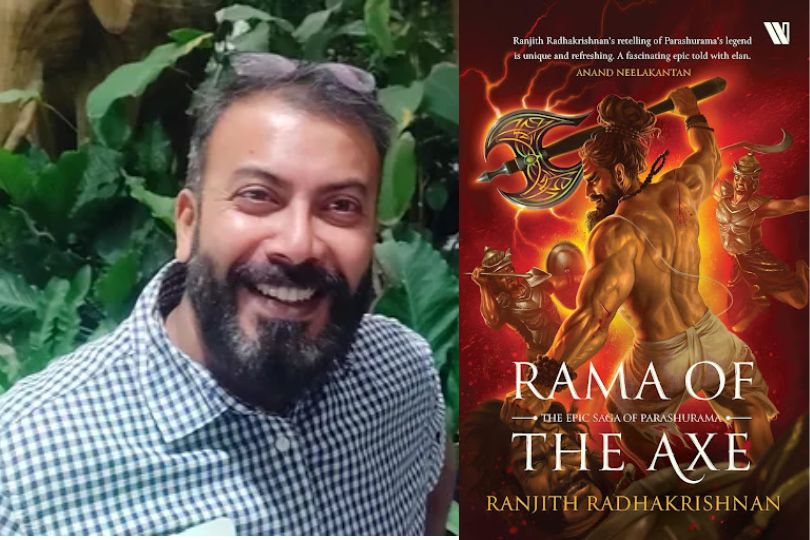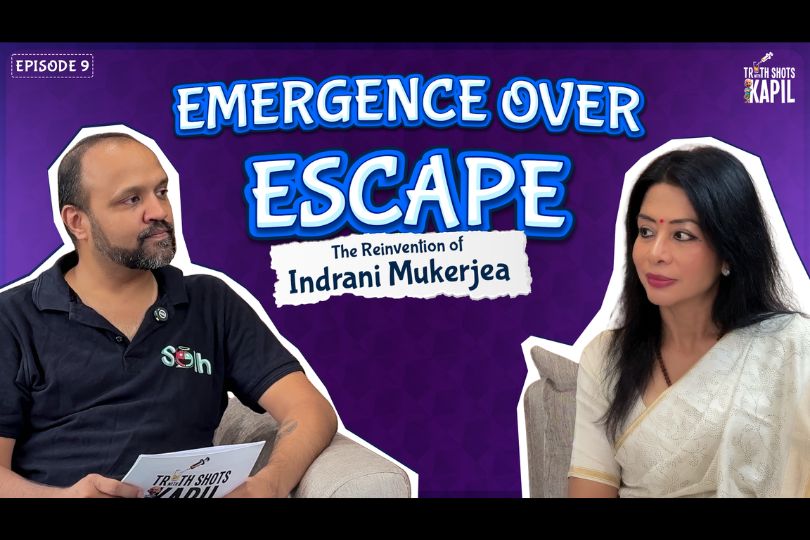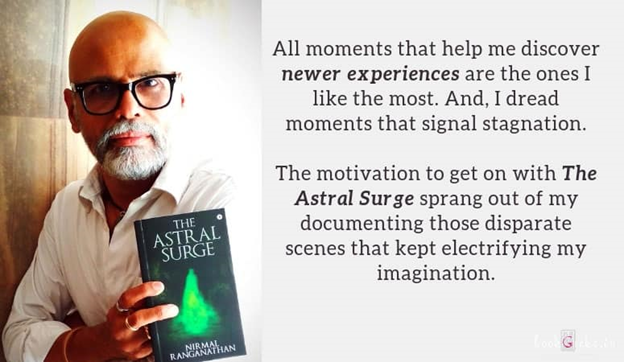Interview with Ranjith Radhakrishnan Author Of Rama of the Axe
Ranjith Radhakrishnan, author of Rama of the Axe, explores the untold depths of Parashurama's mythology, blending warrior prowess with spiritual growth.on Nov 20, 2024

About the Author
Ranjith Radhakrishnan is a Bengaluru-based entrepreneur. He is an ex-actor, assistant director, script assistant, toll manager and ex pretty much everything else. He is father to a brat and husband to a wife who loves dogs, cats, cows, elephants, her husband, and other animals, strictly in that order.
He loves grandmothers’ tales and stories from the Puranas and Itihaasas. He is a proud ‘pagan’ and ardent ‘idol’ worshipper. He drinks a lot of tea as every right-thinking person should.
Frontlist: Parashurama is the sixth avatar of Vishnu, yet his story is less explored than that of avatars like Krishna or Rama. Why do you think that is? What made you choose to focus on him, and do you see a narrative gap that Rama of the Axe fills?
Ranjith: The first time I stepped into a Parashurama temple was for the death rites of my father. It was a temple on the outskirts of Thiruvananthapuram. I'd been to all the important temples there, but I hadn't even heard of this one. A series of deaths in my family compelled me to go back to this temple many times. It dawned on me that I didn't know much about the sixth avatara, just the popular narrative of a wrathful rishi-warrior who beheaded His mother.
The more I researched and read, the more He intrigued me. Not many temples are dedicated to Him, and there's no single definitive text or saga like the Ramayana or the Bhagavatham. I believe this is the major factor that makes Parashurama less known, less explored, and greatly misunderstood. Ancient lore has it that Parashurama raised the western coast of India from the sea. People don't realize which God is referred to when calling Kerala "God's Own Country." And that's exactly what gave me the impetus to write about Him.
I certainly hope Rama of the Axe has filled a narrative gap. Popular culture has reduced Parashurama to a one-dimensional figure. I hope the complexity and depth of the avatars have come through and that I've been able to portray the breathtaking expanse of Parashurama's spiritual and philosophical exploits, not just His extraordinary battle prowess. This is the crux of part 2 of the story. This series is my homage to Him.
Frontlist: You've foregrounded lesser-known aspects of Parashurama's life. What were some of the surprising elements of his story that you wanted to bring to light? How did you balance staying true to the original mythology while adding your own creative interpretations?
Ranjith: The surprises never cease! The latest one is Parashurama's connection with Tamizh and Tholkapiyar. Many weighty words are tagged to Him — Brahmakshatriya, Chiranjeevi, Saptarishi. The how and why of all this isn't really explored; we often have to make do with run-of-the-mill explanations. The thrill of exploring these facets and shining some light on them continues to drive me as I write part 3.
My primary intention is to stay true to the character. I seek to understand why someone who committed matricide is an avatara, rather than critique why he shouldn't be one. I think that intention has led to many answers and the enormous grace of Devi. All creative liberties were taken with that focus in mind and mainly involved adjusting timelines slightly and exploring the motivations of characters.
Frontlist: Parashurama is known for his warrior-like abilities, but he also embarks on a spiritual quest. How do you balance his role as a powerful warrior with his spiritual growth? Do you see these two identities as conflicting or complementary?
Ranjith: Definitely complementary. It's strange that story upon story in the Puranas talks of the incredible prowess of heroes, earned through rigorous tapasya or won through good karma. Yet, we somehow treat tapasya and prowess as two different things. I wanted to highlight that bhakti and dhyana were crucial in Parashurama's transformation. This led to the idea of His famed weapon being won through tapasya and introspection, and also being an aid in His further spiritual quests. There is intelligence and awareness inherent in the weapon.
It also led to a new concept of what a Brahmakshatriya is — a person who can engage in battle and tapasya simultaneously. Furthermore, the potency of the divine weapons that Arjuna or Parashurama possess depends on their tapasya's strength.
Frontlist: You've had a diverse career, from acting and filmmaking to entrepreneurship. How has this varied experience influenced your storytelling in Rama of the Axe? Do you draw from your previous roles when writing?
Ranjith: I'm sure the varied experience, as you kindly put it, has influenced my storytelling. Our experiences shape our outlook and thoughts, which reflects in our language and output, whether oral or written. How they've impacted my writing isn't something I've mulled over, but perhaps with time and more writing, I'll gain a deeper understanding. Most readers say some parts of the book play like a movie in their minds as they read, and I'm sure that comes from my life in the film and TV industries.
Frontlist: Parashurama is often associated with vengeance and justice. In your view, how is his story relevant to modern readers? Are there contemporary themes you hope readers will connect with in Rama of the Axe?
Ranjith: There is huge curiosity among young people about our history and ancient roots. They often view the ideologies they're served with skepticism. Here lies a writer's duty and challenge; unfortunately, we often fail them. I present our heroes and heroines so readers get a sense of individual and social identity. The story addresses issues of today and connects us to our ancestors so we can understand them better.
Broadly speaking, themes of tradition and progress, Dharma and morality, transformation and self-discovery, and some social commentary come into play. A society lacking self-awareness and understanding of what is harmful to it — swayambodh and shatrubodh — perishes sooner or later. I address this in the story, presenting it sincerely and leaving it to the reader to form their conclusions. This approach, I feel, is better than being didactic or reshaping the story to fit an ideological narrative.
Frontlist: What were the most challenging aspects of writing about Parashurama's mythology? Did you encounter any unexpected obstacles?
Ranjith: The most interesting part of writing Parashurama's story is that the obstacles often provide the answers. The lack of information or specifics on a particular incident led me to dig deeper, patiently untangle a knot, and follow where a thread might lead. The biggest challenge, perhaps, is the stereotype of an angry and violent Parashurama, but this turned out to be a blessing because adding context to His struggles and deeds brought a fresh perspective for readers.
Another obstacle is the scarcity of texts providing insight into His philosophy and theology. For a hero who is an avatar of Mahavishnu, a disciple of Mahadeva and Dattatreya, a devotee of Devi, who taught Kalarippayattu, and sought to bridge Veda and Tantra, this aspect is vital to understand Him fully. Part 2 of Rama of the Axe is an attempt to address this — to show that He's much more than an angry man seeking His next battle.



.jpg)






.jpg)

.jpg)
.jpg)

.jpg)

.jpg)

.jpg)










Sorry! No comment found for this post.